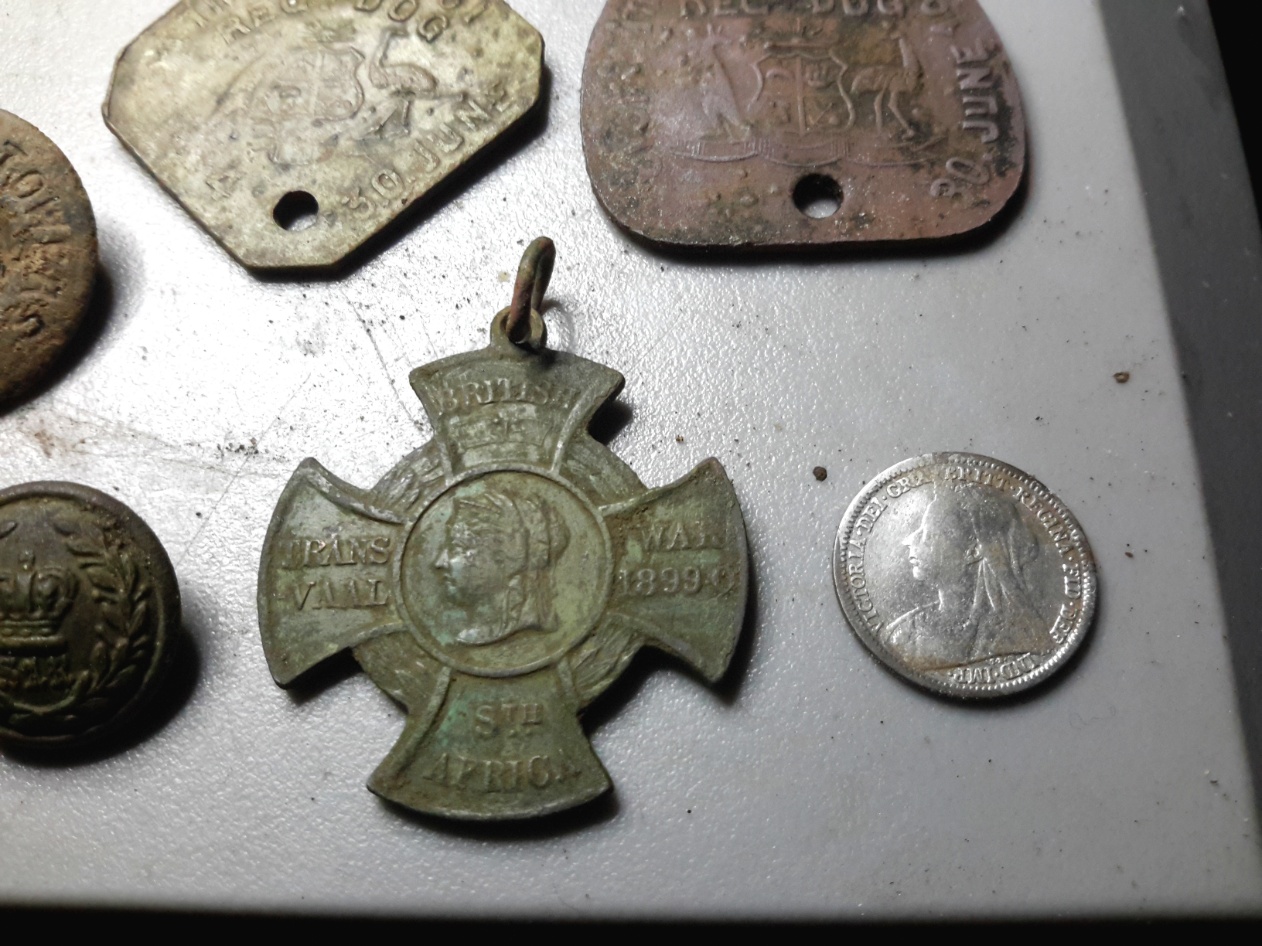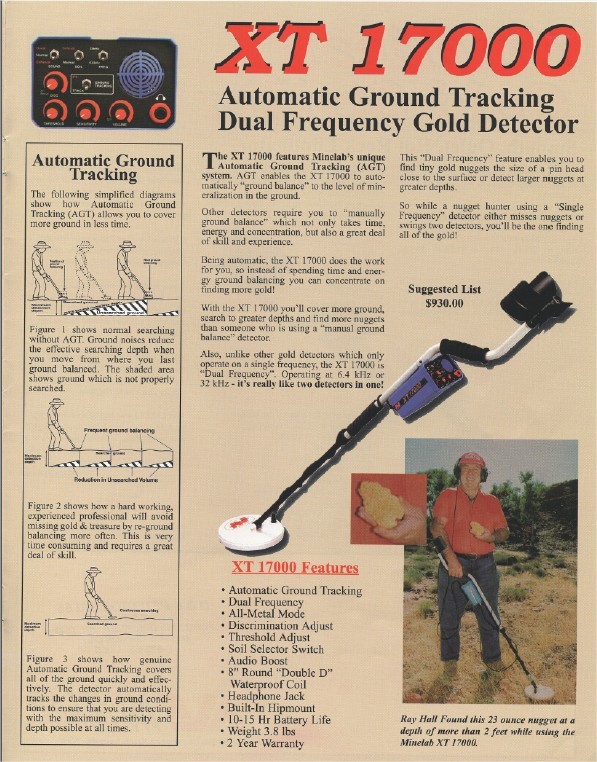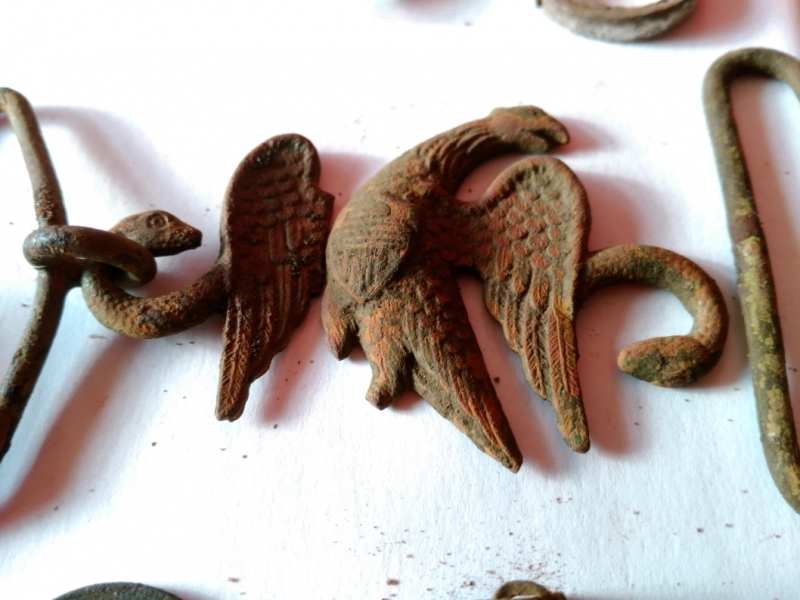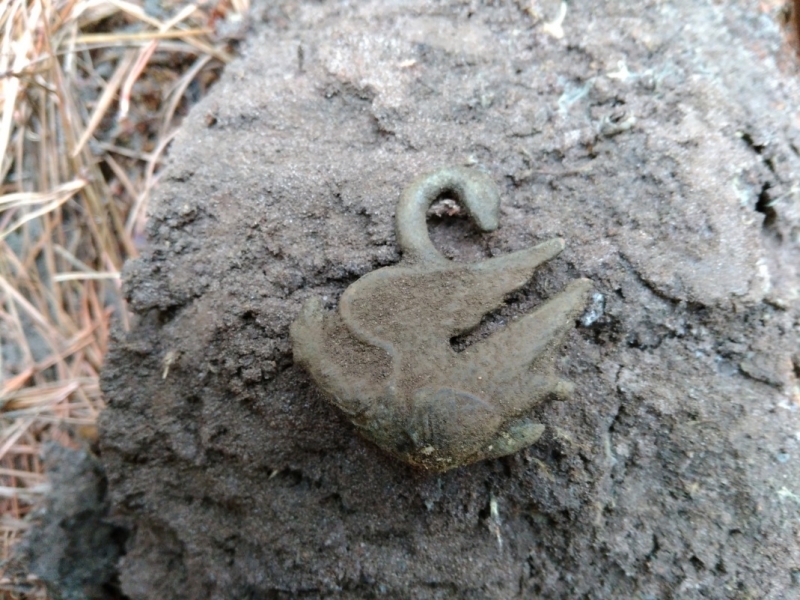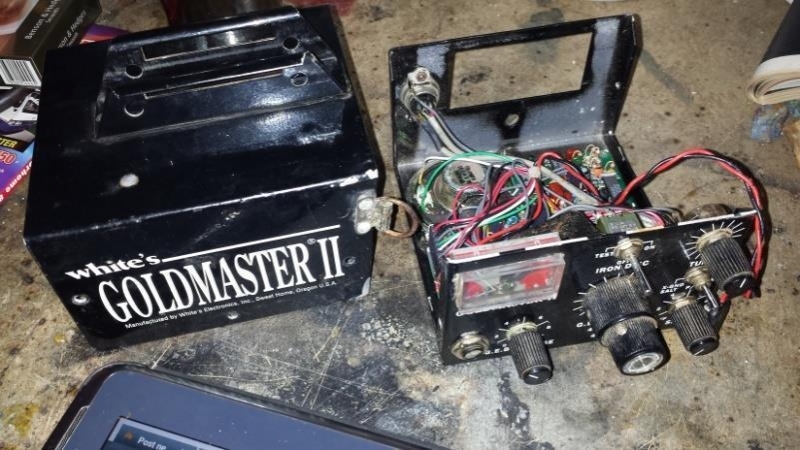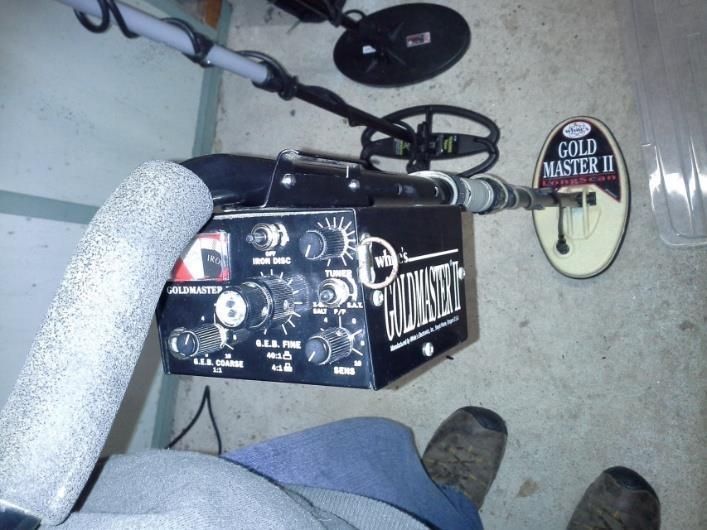-
Posts
213 -
Joined
-
Last visited
Content Type
Forums
Detector Prospector Home
Detector Database
Downloads
Everything posted by Goldpick
-
Yes, definitely a fan of the Deus platform, and on my ground I don't deem true multi-frequency ability to be an absolute necessity. If I still dabbled in beach hunting then it would be a different story on what I would require in a detector. As you mentioned, we will just have to wait and see regarding people's thoughts on the ORX, no doubt it will have a tough time in what is already a saturated market.
-
You don't necessarily need the X35 coil for coin shooting with the ORX, 13kHz on the HF coil should be just fine for general coin shooting, just as it is on many current single frequency US made detectors running a similar kHz. Still a lot cheaper way to get your hands on a Deus, albeit a simplified one, and those additional higher frequencies will also lend themselves to relic hunting, micro jewellery and working sites with heavy iron.
-
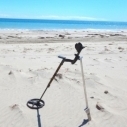
Findmall Closes All White’s Forums
Goldpick replied to Steve Herschbach's topic in White's Metal Detectors
Whites disappearance from that forum is still not a good look from a marketing perspective, probably leaves more questions than answers for those that enjoy Whites products. Some say social media offers more freedom of speech over forums, though there are always the minority that just can't help themselves by abusing that privilege at the expense of others. -
Being an XP Deus user for a while now, I am now of quite quite the opposite view on usage of wireless coils. Is it crucially important to have a wireless coil, maybe not so, though it does throw up some advantages and conveniences that I have learnt to enjoy over the years. Is there more EMI susceptibilty than a wired detector, not that I have experienced when compared to several other brands/models I have used, in fact it was probably worse on my previous Etrac and Explorer. The wireless connection between coil, control box and headphones works seamlessly and is extremely quick - no lag. If you want to submerge the coil, there is a relatively cheap aerial kit for that purpose to retain wireless capability. As for being completely submerged, wired detectors still rule the roost in that respect. I often detect some pretty scrubby locations that have played havoc with wired coils in the past, including shielding and plug issues. Having no physical connection between control box and coil means less avenues for water ingress, corrosion, damage, and downtime whilst allowing a phycially smaller control box with obvious weight savings. Being a true compact fold up detector, you could probably do without stressing cables from constantly folding and extending the shaft all the time. The time it takes to change out coils to startup is literally in seconds, no winding cables, and no fiddly and easily damaged plugs (hello AT Pro). With regards to cost, I have no issue with the price considering how flexible these coils are for various fields of detecting, especially when combined with the adjustability of the Deus. Some wired detectors do physically require different sized coils to achieve similar performance, especially if you have no direct control over things like recovery speeds other than in preset programs (ie single tone = deep/slow recovery, 5 tone = shallow/ fast recovery). With the range of coils I have for my Racer 2, I could have made do with 2 Deus coils for pretty much the same price. Inbuilt batteries have never been an issue, if taking a few seconds to connect a coil to the charging clip is an inconvenience, then life must be pretty hard. Forget to charge up ovenight, only 15 mins charge though my vehicles's USB port will give me an hour of detecting, or I can run off a small portable power packcwhilst detecting, or just swap out to another fully charged coil. Forget batteries heading out to a remote spot with your wired detector and you have nothing but a long drive ahead of you, and probably a few choice swear words. Going on three years now and still getting good charge on my wireless coils. Introducing electronics and battery into the coil has not come with the expense of weight, as any Deus owner knows these carbon fibre impregnated coils are extremely light to swing. Aside from that we are now seeing electronics introduced into coil desIgns on a more regular basis (thinking Nox, CTX etc), so can't be too far off taking the next step to wireless capability. Why don't we see more manufacturers utilising wireless coils, probably for the same reason we don't see more manufacturers making true multi-frequency detectors - patents etc. Wireless headphones were initially scoffed at as a gimmick when introduced to the market compared to tradional wired units, these days several manufacturers will struggle to move their products wthout the inclusion of such technology. I'm not sure why we are looking at wireles coils from the perspective of being new tech, afterall the Deus has been around since 2009 with essentially the same product. Will it happen for US manufacturers, probably not, MInelab, maybe.
-

Tokens Amongst The Ruins
Goldpick replied to Just Jay Detecting's topic in Metal Detecting For Coins & Relics
Great site and traders tokens, the other round object that you state as being modern is the innards from a pocket watch. -

Do You Remember Your Old Detectors?
Goldpick replied to geof_junk's topic in Detector Prospector Forum
My first half decent detector was the Minelab XT17000 with the round and elliptical coil, plus a whopping big 18" coil that I'm guessing was originally from an Australian made Midas detector. I really didn't do that machine justice at the time, being new to prospecting and lack of the internet meant a pretty big learning curve trying to locate anything of worth in the field. I was actually after a Whites GM3 at the time, though didn't own one till many years later. -

Does The Original 11 Inch Coil Have Anything Over The New X35
Goldpick replied to Rick73's topic in XP Metal Detectors
Correct Steve, the new coils will replace the older LF ones as stock coils for the Deus from Sept 2018 onwards. -
For me detecting efficiency comes with using the old "KISS" principle, and not being overladen with gear when out on a hunt. All I ever carry is my tethered MI-6 pinpointer which has its holster sitting horizontially for quick retrieval, a large ammo dump bag for all finds other than the the more desirable coins, small container for the good stuff, and the predator digger which also sits in the dump bag vs using its sheath. The Deus also helps out by being so lightweight and with no headphone cables to worry about, and the coil drawback method of pinpointing has proved to be very accurate and quick to locate targets and to minimise unnecessary digging. The speed at which I detect is usually dictated by the type of site I am detecting, some relic sites you can encounter a target ever foot or so, hence it can be a little more intensive on the recovery side of things and worth slowing down to investigate less obvious targets, whilst in a park setting I tend to take my time more and just enjoy going for a wander. I also spend a decent amount of time to ensure that the ground surface is left with little or no evidence of being there, no point in shooting yourself in the foot if intending to revisit the site ( or even if you don't intend to revisit).
-

White's Sierra Pulse Pro ( White's SPP )
Goldpick replied to Steve Herschbach's topic in White's Metal Detectors
The Australian Whites distributor still has the 150 coils in stock for $220au, though also advertises them on ebay for $50au plus postage. Might be worth looking up if still keen, converted over to US dollars it is a real bargain (around $38US). Seems we received a fair few of the SPP units after their limited success on the African market, I still own one with a range of Miner John coils. -

Buying Deus With 9” High Frequency As Stock Coil
Goldpick replied to Steve Herschbach's topic in XP Metal Detectors
It probably depends on what packages local dealers want to tailor for customers needs, or what combinations prove to be most popular. Here is Australia our local XP distributor offers a goldfield package with the round 9" HF and wired headphones (WS4 optional), or a double package with both the 9" LF and 9" HF round coils with WS4 or WS5 being optional. Pretty sure I could get any combination in a package if requested - a sale is a sale, you have to be flexible these days if you want detectors walking out the door. The other option would be to order a specific package through the distributor, and have it shipped in the next batch of stock from France with a specified coil/coils. -
You can get an aerosol can of rubberised coating from auto shops that is very hard wearing. Used it in the past to coat the underside of the coils that had no skid plate, don't think I ever had the need to recoat them from memory. Initially picked up on the idea when some beach hunters were using it on their coils for increased longevity.
-
As above, the XP MI-6 paired with Deus. Great for silent running in areas where you don't want to be noticed, excellent battery life, lithium rechargeable battery, and fully replaceable parts give it some sort of longevity where most others are throw away when cactus. Backup is the Garrett Carrot, had zero issues with that since it was first released. Have a Deteknix PI pinpointer for areas with abonormal amounts of mineralisation which cause others to false. My TRX and Minelab Pro-find don't see much use these days due to various shortcomings.
-

Racer 2 Problem With Mars Coil
Goldpick replied to Supershaw's topic in Nokta / Makro Metal Detectors
I have the same coil for my Racer 2, and whilst it does get good depth, it does seem to be a bit touch sensitive to coil knocks. Whether that is due to the ground balance setting being a tad off when using the ground grab method, not too sure - really need to have a bit more of a play with it the come to a solid conclusion. Might pay to have a play with the manual ground balance to see if it can rid some of the falsing, as the Racer really does run nice and quiet with the stock coil on wet sand and in the water as well. -

Fisher F75+ Announced
Goldpick replied to Steve Herschbach's topic in First Texas - Bounty Hunter, Fisher & Teknetics
Something that would really change the F75 for the better, is to clean up the delta pitch tones so that they flow more smoothly & are more pleasing & informative to the ear. At least that would offer some similar ability to rivals like the Deus and Impact, especially for those that like to pick through heavy iron. I do own a DST/Fast Process F75, and was looking forward to trying out delta pitch, unfortunately it left a lot to be desired, and something I feel that FT could really improve upon to extend the life of the platform. -
I wish the Racer 2 had the 99 tones option as on the Impact, would make it a more complete platform, and without the extra weight of the Impact. I was hoping the "bigger is better" mentality would not come to fruition on the Impact platform, just as with the CTX, regardless of how well balanced it is (still swinging a decent amount of weight). If Quest detectors can make a lightweight, waterproof and selectable frequency platform, then it should really be achieveable on flagship models from most well established brands by now. Looking past the weight issues, at least the Impact looks to have plenty of programs and features to keep one busy for a long time.
- 9 replies
-
- 1
-

-
- minelab ctx 3030
- nokta impact
-
(and 1 more)
Tagged with:
-

Sun Ray Invader Probe Vs. Standalone Handhelds
Goldpick replied to GB_Amateur's topic in Metal Detector Advice & Comparisons
This is probably where XP's Mi-6 pinpointer missed the boat with regards to being able to run through one of the Deus programs, hence offering some form of ID or discrimination. Only problem is the Deus shuts off the coil when the pinpointer is in operation. Whether there would be any way in future they could makes this a viable option, especially considering it is completely wireless, it would do away with all the negatives on the Sunray probes. First XP need to address the reliability of the Mi-6 switching before considering anything else. -

How To Search Tall Grass Area
Goldpick replied to 57buick's topic in Metal Detecting For Coins & Relics
Have you hit the ploughed field at all to see whether any finds have been distributed away from the actual house/homestead site? Last old house site I detected with ridiculously high grass, I just dropped the reactivity right back, and managed to pick out some coins despite not being able to get coil right to the ground surface. After a while just walking around the site, it was enough to both see where I had previously detected (gridding), and also helped with the actual detecting itself - almost needed to retrace my steps the second time around once the grass was pushed flat. Lastly I utilised the 13x11" Deus coil which has a bit more weight to it, and made it a bit easier to get closer to the ground, though made it rather tiring to swing from side to side. Usually I don't tend to make it a habit of detecting high grass, espeically in summer with snakes being a real risk. -
I am often faced with this dilemma, spending many nights persuing google earth to scout out new locations. 9 times out of 10 when I head back to well detected areas, I tend to be surprised on what targets still remain in the ground, the type of areas that I had almost totally given up on. You do tend to get a bit lazy after a while on those sorts of site once the good stuff has been cherry picked out, the best line of thinking is probably to walk away and come back later with some renewed enthusiasm. That's when I start making headway into some good finds, investigating any tone regardless off how crap it sounds (still repeatable and breaks through discrimination), and taking my time to cover area in more detail. I also try and think outside of the square - for example, old house site at bottom of hill, mmm, would they have climbed to the top of the hill to see if anyone was coming down the road on horseback? Turned out that hunch was indeed correct, several buttons and an 1820's US Naval buckle later I had happened upon a completely new area (yes, quite a rare US buckle in Oz). I do like a challenge, and probably find it more rewarding to locate that single masked silver during a several hour session over cherry picking coins in a fresh area. Just seem that more rewarding, though some seem to think that the quantity of finds trumps the quality of finds. Sometimes a simple weekend drive in the countryside is enough to garnish some new sites, those sorts that don't appear obvious from satellite photos, and sometimes often not seen as prosepctive in any way at ground level. Only way to tell is to get out and give the area a quick test detect to see if anything with some decent age turns up - sometimes it can lead to a new honeyhole, other times it can draw a complete blank. Sometimes visiting your local historical society can open up a whole new number of options. Many of these guys have info stored in their heads on where old houses or sites used to exist, and are a valuable resource. Last guy I talked to gave me a hand drawn map of where many houses used to stand in the local forests, and since then I have managed to locate most of them (no surface evidence of existing).
-

When To Walk Away....
Goldpick replied to Gbonus uralias's topic in Metal Detecting For Coins & Relics
The only way to learn is to satisfy your curiosity and dig those questionable targets. We all dig junk, even the more experienced detectorists, why, to satisfy our curiosity and learn from the process. In that respect you can come away from a hunt a more seasoned detectorist, particularly if you dug that dodgy high tone which turned out to be a coin next to another junk target, or a pull-tab that in fact turned out to be a gold ring. Unfortunately when people post their finds on forums, they rarely offer up the amount of junk that they retrieved in order to obtain all their good targets. On our local forum some of the more experienced detectorists do post their junk targets, mainly to help those new to the hobby to realise that the junk to coin ratio isn't always that favourable. If I had a dollar for the number of dodgy targets I dug that turned out to be an unexpected surprise, I'd be a rich man. Another couple of things to consider is compatibility to the detector itself. Personally I have found some detectors that have tones that I could simply not live with, no matter what other good features it offers. Took me a while to find a couple specific detectors that have tones that please my ear, and provide the type of target information I was after. If you don't gel with a particular detector over a reasonable period, then there is the possibility that you never will. I didn't enjoy using the x-terra 305, didn't like the tones nor the conductivity range numbering (prefer 0-99 on a vlf), yet loved the tones from both the Explorer and Deus. A more practical solution is to look at what you can do about the amount of junk and "iffy" targets that you come across, especially if targetting shallow coins in junky parks. What sensitivity are you running - try running with a lot lower setting to limit the amount of targets the detector is seeing , dumb the detector down so to speak. You are looking for shallow coins, not 10" deep colonial gear. Try using more discrimination or notch out parts of the conductivity range that your are not interested in - no point in listening to a barrage of tones when there is no need to. Notching can be very good for cherry picking shallow coins, as long as you have a wide enough notch width to cater for things like coins sitting at odd angles or on edge under the surface. -

More Ground Coverage And More Targets
Goldpick replied to Gbonus uralias's topic in Metal Detecting For Coins & Relics
Aside from use of larger coils and the swing speed you run with, it is really the brain that dictates how fast one can detect and pick up on good targets from amongst junk or iron. After a while you do become accustomed to automatically picking out certain tones from the mix, and even on a fast sweep speed all you need is a brief snapshot of a desirable tone to warrant further investigation - often without consultation with the screen for reference to the ID. Once your ears do prick up on a possible good target, then you can slow your sweep speed down to confirm it is indeed a diggable tone, or if any others are close by. That's how I run, and it will vary depending on the site and expected junk typically found on such a site. Will also vary if you are after deep and/or small coins, as this may dictate a slower sweep speed to effectively pick up on such targets - once again, all depends on the site and the age of the coins you are seeking. Personally I find procrastinating on whether a target ID is a digger or not really slows down my finds rate, better to extract the target than wonder whether the target was indeed a digger (ie coin on edge, or off kilter ID due to coexisting with nearby junk). I am not too concerned about overlooking targets, as most of my sites are revisisted on multiple occasions, and from different orientations. If I do find an area that has multiple diggable targets, then I will grid up the ground and go over it in further detail. Using a larger coil for coverage is all well and good, though can be just as much of a handicap with regards to weight (fatigue), and having too many targets under the coil at any one time to make sense of what is going on under the surface. I generally search for older coins, and have pretty much trained my brain to ignore shallow modern junk (no matter how good it sounds), whilst keeping an ear out for those quieter more mellow tones of deep coins. You do find after a while that you can find an optimum swing speed to match the capabilites of your detector, some detectors dictate a faster sweep speed & some prefer much slower movements - also varies if you have adjustable recovery speed. If I am targetting shallow modern coins, I just detect at a comfortable speed for the amount of time I intend to spend there, no need to run around swinging like a madman - you'll pay for it later that night. At the end of the day it doesn't matter how many finds your friend makes at the conclusion of the day, the main thing is that you enjoy yourself in the moment, and gain some valuable knowledge along the way. -
Wondering if it is an issue with the auto ground balancing being out of wack, hence causing the touch sensitivity. I know the Deus (and other VLF's) get very touchy if the ground balance is set too low, falsing on grass etc. Especially if it can be replicated on both coils.
-

Garrett AT Max Delayed Until September?
Goldpick replied to Steve Herschbach's topic in Garrett Metal Detectors
I wonder if it has something to do with there being no "volume adjust" on many of the AT Max pictures provided by dealers. Look at some of the newer pics, and "volume adjust" now appears where "frequency adjust" used to be (above the sensitivity button). Whether this is for adjusting overall volume vs iron audio volume, not really sure. I know there were a few complaints from AT Pro users on the fact that you could still not adjust the iron audio volume as on many other current VLF detectors. Whilst some are speculating that the "frequency adjust" version only appears on prototypes shown on You Tube and elsewhere, still doesn't explain why dealers have this version pictured for taking pre-orders. Go to the Garrett website, and the AT Max faceplate is completely different - new Z-link labelling, the backlight control has moved from Elim to Iron Audio, and Elim is now labelled as Freq. Are they altering features on the run, based off forum feedback?? -

Audio Or Visual Target ID
Goldpick replied to tboykin's topic in Metal Detector Advice & Comparisons
Definitely beep over peep, sort of feel blinded using a detector with nil or very little tonal information, and having to resort to using less accurate visual indicators. If I had to rely on ID's alone, I reckon half the good gear I've detected over the years would still be sitting in the ground. -

Problem With White’s Goldmaster Detector
Goldpick replied to Steve Herschbach's topic in White's Metal Detectors
I purchased a used GM2 from the US several years back in need of some reconditioning, was quite surprised to see how many solder joints had cracked, and also a few of the wires had parted way from the coil connectors at the rear, probably from flexing over the years. As mentioned, it might pay to remove the cover and go over every wire to ensure both the soldered connections are still ok, and all cables are actually still connected. Only took an evening to do the soldering, plus a decent cleanup to restore it to it's former glory. -

What Was Your 1st Detector?
Goldpick replied to Sourdough Scott's topic in Metal Detector Advice & Comparisons
First detector was a mistake, a cheapo Micronta unit that was good for picking up reinforcement in the driveway and fencing wire, not so good at finding dad's buried wedding ring in the front yard! First real detector was an XT17000 with two factory coils and a massive 19" Super depth coil made by Detector Technologies in Exmouth, WA. From there I went to yet another XT17000, followed by a Vaquero, Whites GM2, GM3, GMT Ace 250, Coinmaster GT, Garrett Scorpion, x-terra 305, Explorer SE Pro & Etrac. Currently own the XP Deus, Racer 2, Teknetics G2, Tejon, F75, Whites SPP, Garrett Infinium and Go-Find 60.

